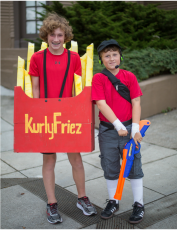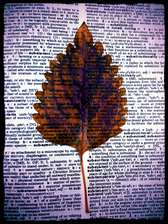Poetry is all about showing the reader what you see or understand what you're feeling. Poetry is high on imagery and short on words. Poetry has fewer rules than regular writing, and gives us a chance to play with words. In fact, there's a term called poetic license, which means that the poet has broken the standard rules of writing to make the poem rhyme or just to make it more interesting.
Get prepared for our DATA Poetry Slam in May. Here are some links to inspire you.
Bronx 6th Grader Wows NYC Poetry Scene, Touchscreen, 3 poems: 59, Paper People, and The Sunshine Kid
Get prepared for our DATA Poetry Slam in May. Here are some links to inspire you.
Bronx 6th Grader Wows NYC Poetry Scene, Touchscreen, 3 poems: 59, Paper People, and The Sunshine Kid
Poem of the Week - Get your poem published here!
He's With me (Previous Poem of the Week Winner)
At the bank Rick waits
sitting in a chair
while I'm in line
he's hunched down
trying to be invisible
as the Security guard approaches
he says to the the guard
"The paintings are nice"
Rick's pretty grubbed out
I'd like for him to bathe more, wash his clothes
clean his room, not drink so much
I'd like to tell him about my problems, talk politics, art, watch a game with him
I yell out to the guard,
He's with me. He's my brother.
---Antonio Calderon
Check out more student poems.
sitting in a chair
while I'm in line
he's hunched down
trying to be invisible
as the Security guard approaches
he says to the the guard
"The paintings are nice"
Rick's pretty grubbed out
I'd like for him to bathe more, wash his clothes
clean his room, not drink so much
I'd like to tell him about my problems, talk politics, art, watch a game with him
I yell out to the guard,
He's with me. He's my brother.
---Antonio Calderon
Check out more student poems.
Types of Poems
Do you like to write, but you're just not sure how to get started with a poem? Try one of these types of poems.
FoundFocus your attention outward in a particular environment – at the mall, the movies, lunch, on the field, a restaurant; or read brief snippets of newspaper articles or listen to lines from the news or a talk show. Select a line that you find particularly interesting. It might interest you because of what it makes you think or feel. Perhaps it brings a particular image to mind. Maybe it just makes you wonder.
Use that line to begin a poem. The rest of the poem does not need to have anything to do with whatever else you heard or saw. It is simply a beginning, a jumping off point for your poem. In fact, you don’t even have to use the whole line. Example Fast Food Alert Would you like to super size that for just 39 small children and a bag of dog food? I ponder this strange request and wonder just what someone would want with 39 small children. If the children were larger, would just 28 do? I imagine an army of freckled-face girls with hair in braids and bandanas as they scrub the grease-laden floor and make tall towers with kibble. DiamanteThis is a simple poem, short and sweet, with a very specific structure. It should be filled with lots of adjectives, some nouns, and very few verbs. You can select any topic you like, but you must follow the format.
Rules: Seven lines – 16 words Lines 1 & 7 – 1 word Lines 2 & 6 – 2 words Lines 3 & 5 – 3 words Line 4 – 4 words Lines 1 & 7 must be the same word…Yes, you begin and end the poem with the same word. Examples Bubbles Foamy, frosty Mountains of white In my nightly bath. Crackle and fizz Then disappear Bubbles Shoe Old, worn The places you’ve Been would surely give You some tales To tell Shoe Spring Sweet peas Daffodils and jasmine Float through my window With the gentle Evening breeze Spring |
Letter or EpistleFor this poem, you will need to use your imagination to create a letter to a historical figure or a character from a book. You may even choose a relative who has died or one you’ve never met. You could write to an inanimate object. (Either way, you need to select a person or thing that has no chance of answering your letter.)
In the poem, make observations about his/her/its appearance, personality, mannerisms. You may ask questions or express your feelings (happiness, sorrow, frustration, joy, etc.) Must be at least 8 lines and begin “Dear _____:” Example Dear Santa Ana, You foul wind. I find the way you bluster in from the East most unsettling. You, with your hot breath making my hair fly about and stick to my freshly glossed lips, which begin to peel and crack the instant you’re here. Why do you torture me so? These bits of dirt you cast into my eyes and mouth as you scatter leaves and dust before you, a clarion that heralds your coming. It’s a strange pleasure you take in making me sneeze. But I know your secret, Mr. Santana. Or should I just say…Devil Wind? Partner Story Select a partner, one you know you can work well with in class. You will be writing a short narrative, in which you each write separate parts. Select a topic for your story, such as an event, a situation, or a person (fiction only), but discuss no other details. Decide who will go first and who will finish. The partner who begins will write 1 paragraph, beginning the story by introducing the topic, the characters, and setting the scene. S/he then reads only the last sentence to his/her partner who must then write the second paragraph without any other information from the first paragraph.
After the second paragraph is written, the second writer reads only the last sentence to his/her partner and so it goes until the last paragraph is written. This story must have at least four paragraphs, but if either writer believes the story needs more, then write to the end. You must have an even number of paragraphs and the writer who began the story may not be the writer who finishes it. The idea behind this kind of story is to write without having a certain ending in mind, to write without thinking too much. This will help you go with your instincts instead of your sense of logic. It’s also really fun to read these stories afterwards. |
AlliterativeAny topic, any length, but you must select as many words as you can that begin with the same letter as your main topic.
Example Junk Junk just jumps out of every jacket, jumper, jeans, jerkin and jodhpur I own. No joke, this junk is a job and a jinx. I harbor no jingoistic attitudes toward junk, really. I’m not jaded, but any jester could see, no jive, that if I don’t jettison this junk before June or July, I’ll have no place to jam another jug, roll of jute, or even a jigger of java here on this jar-sized junk I call home. Dictionary PoemFlip through the dictionary in search of interesting words you don’t know. Select 3 words, and write down their meanings. Pick your favorite word, and create a poem using that word (or 3 poems using all the words). Each word must be used correctly, illustrating that you know its meaning. If it is a verb, use it as a verb. If it is a noun, use it as a noun. It should be the subject of your poem.
kapok: n. A silky fiber obtained from the fruit of the silk-cotton tree, and used for insulation and as padding in pillows, mattresses, and life preservers Example The Demise of Teddy Last week I spied A small bit of spongy White on the bed Next to Teddy, oh Had I known it Was no ordinary piece Of fuzz, but the very Stuff of his innards, I would Have whisked him Away to the sewing Room for a stitch And tuck. No such luck For my Teddy whose kapok Now spills across the Bed as his empty fur Lies lifelessly, his mouth still Smiling sweetly. |






